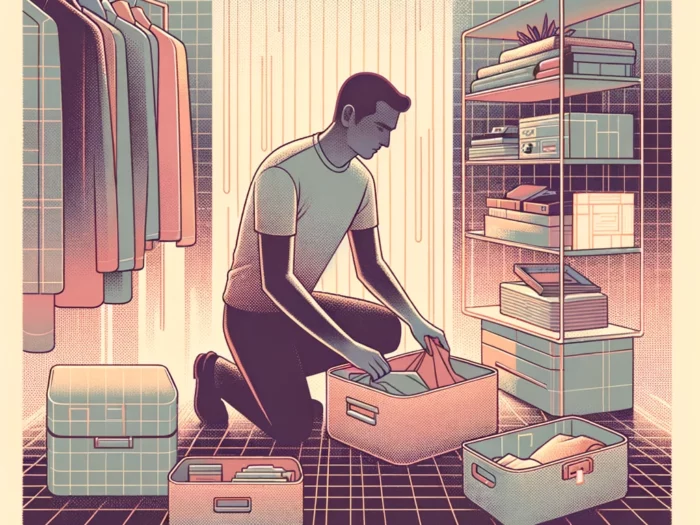Introduction
Ever tried to capture a sunset in a jar? Crafting the perfect playlist feels a bit like that. It’s an attempt to bottle up emotions, memories, and atmospheres into a sequence of songs. In our vast digital universe of endless tracks, creating a playlist that truly resonates can be both a joy and a challenge. Here at Hip Diggs, we’re all about savoring life’s simple pleasures, and there’s nothing quite like the thrill of piecing together that impeccable playlist. So, grab your favorite headphones, and let’s embark on this melodic adventure together.
1. The Heartbeat of Your Playlist: Its Purpose
Before you even think about hitting that ‘add to playlist’ button, pause for a moment. Close your eyes and envision the feelings you want your playlist to evoke. Is it the adrenaline rush of a road trip, the serenity of a lazy Sunday morning, or perhaps the bittersweet pang of old memories?
Identifying the core emotion or theme of your playlist is like choosing the destination for a journey. It’s the North Star guiding your musical choices. Maybe you’re crafting tunes for a friend’s wedding, evoking both tears and laughter. Or perhaps you’re curating beats for a workout, where each track pushes you a step further.
Remember, the magic often lies in the details. It’s not just about stringing together hit songs; it’s about the narrative, the ebb and flow, the crescendos, and the pauses. By tuning into the purpose of your playlist, you’re setting the stage for a symphony of emotions, memories, and moments.
2. Understanding Your Audience: Who’s Listening?
When I was asked to curate a playlist for my cousin’s wedding, I knew I had to consider a diverse audience. From the young flower girl who loved Taylor Swift’s Love Story to the grandparents swaying to Unforgettable by Nat King Cole, I had to find a balance that would resonate with everyone.
Understanding your audience is crucial when crafting the perfect playlist. Are you creating a playlist for a lively party, a romantic dinner, or perhaps a personal workout session? Knowing who will be listening helps you choose songs that connect with them, creating a shared musical experience. Whether it’s the latest pop hits for a younger crowd or timeless classics for a more mature audience, tailoring your playlist to your listeners ensures that your music hits the right note.
3. The Playlist’s Pulse: Sequencing and Flow
I’ve always believed that a well-sequenced playlist tells a story. It has its highs and lows, moments of reflection, and bursts of energy. I recall curating a playlist for a friend’s dinner party. I started with the soothing sounds of Norah Jones’ Come Away With Me, transitioning into the mellow vibes of Yellow by Coldplay. But to keep the energy alive, I soon shifted to the upbeat rhythms of Happy by Pharrell Williams. The guests appreciated the ebb and flow, with each song setting the mood for the evening.
A well-thought-out sequence can make or break a playlist. It’s essential to consider the mood you’re aiming for and how each track contributes to that ambiance. While it’s tempting to group similar songs together, sometimes a contrasting track can provide a refreshing change of pace.
4. Embrace the Power of Repetition
During a family reunion, I took on the role of the evening’s DJ. As I played Here Comes the Sun by The Beatles, I noticed a shared smile among family members. It was a song we’d grown up with, a track that had played in the background of countless family gatherings. Its familiarity brought comfort and a sense of nostalgia.
Repetition in music, especially with familiar tracks, can create a sense of comfort and resonance. These are the songs that take us back, that remind us of specific moments or feelings. However, the trick is to incorporate these classics without making the playlist feel repetitive or dated. It’s about striking a balance between the old and the new, ensuring that while listeners enjoy the comfort of the familiar, they’re also introduced to fresh tracks that could become their new favorites.
5. Prioritize Song Quality Over Quantity
I remember attending a friend’s party where the playlist seemed endless, but only a few songs truly stood out. It made me realize that a playlist, much like a curated art collection, should prioritize quality over quantity.
Adopting a minimalist approach to playlist creation means choosing songs that truly resonate, tracks that add value to the listening experience. It’s tempting to add more songs just to make a playlist longer, but this can dilute its impact. Avoid the trap of adding fillers. Instead, focus on handpicking tracks that align with the playlist’s theme and evoke the desired emotion. After all, a shorter playlist of memorable songs is far more impactful than a lengthy one filled with forgettable tunes.
6. Incorporate Moments of Reflection
During a long drive through the countryside, I had a playlist running in the background. As the scenic beauty unfolded outside, Ludovico Einaudi’s instrumental piece Nuvole Bianche began to play. The absence of lyrics allowed me to immerse myself in the surroundings, turning the drive into a reflective experience.
Incorporating pauses or instrumental tracks in a playlist can be transformative. These moments, devoid of lyrics, give listeners a chance to introspect, to get lost in their thoughts or simply appreciate the world around them. Such tracks can act as a palate cleanser, breaking the continuity and enhancing the overall listening experience. It’s akin to a quiet interlude in a bustling symphony, providing depth and contrast.
7. Keep It Dynamic
I recall a beach party where the playlist seamlessly transitioned from the reggae vibes of Bob Marley’s Three Little Birds to the indie pop energy of Vampire Weekend’s A-Punk. The shift in genres kept everyone on their toes, eagerly anticipating the next track.
To keep a playlist engaging, it’s essential to introduce a dynamic range. While maintaining a central theme or mood is crucial, varying genres or sub-genres can add layers of interest. It’s about striking the right balance between predictability, where listeners find comfort, and surprise, where they discover something new. A well-curated playlist should feel like a journey, with peaks and valleys, moments of excitement, and intervals of calm.
8. Review and Refine
A few months ago, I crafted a playlist for my morning runs. Initially, it felt invigorating, but over time, I noticed some tracks no longer matched my pace or mood. That’s when I realized the importance of revisiting and refining.
Creating a playlist is an iterative process. As our moods, preferences, and circumstances change, so should our playlists. It’s beneficial to periodically review your song choices, removing tracks that no longer resonate and adding fresh ones that align with your current state of mind. Think of it as pruning a garden, ensuring that it remains vibrant and relevant.
9. Share and Gather Feedback
After spending hours curating a playlist for a friend’s birthday party, I eagerly shared it with a few close friends beforehand. Their feedback was invaluable. While they loved most of the tracks, they also suggested a few additions that turned out to be hits at the party.
Sharing your curated list not only spreads the joy of music but also opens the door to valuable feedback. Whether it’s friends, family, or the broader community, gathering insights can provide a fresh perspective. It’s an opportunity to discover hidden gems or understand different musical tastes. And with every piece of feedback, you’re equipped to make your next playlist even more captivating.
Conclusion
Crafting the perfect playlist is an art, a journey of musical exploration that brings immense joy and satisfaction. It’s about connecting with oneself and others, creating a tapestry of sounds that evoke emotions, memories, and experiences. As you’ve seen, the process involves careful selection, reflection, and continuous refinement. So, why wait? Dive into the world of playlist curation, share your masterpieces, and let the rhythms of music enrich your life and those around you.









